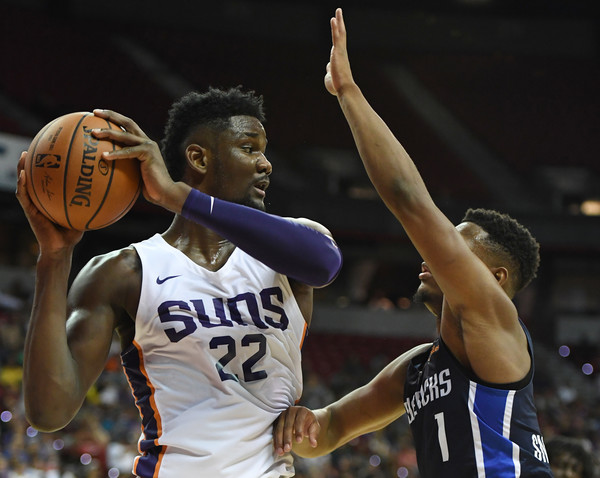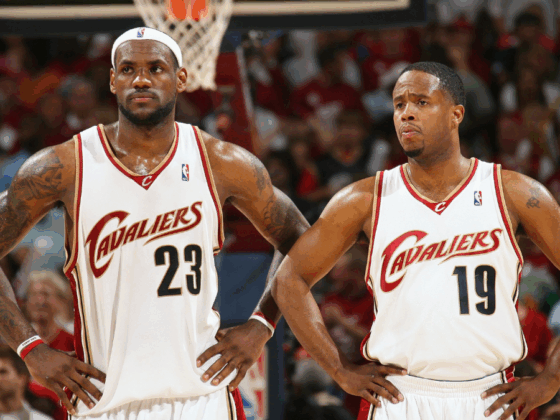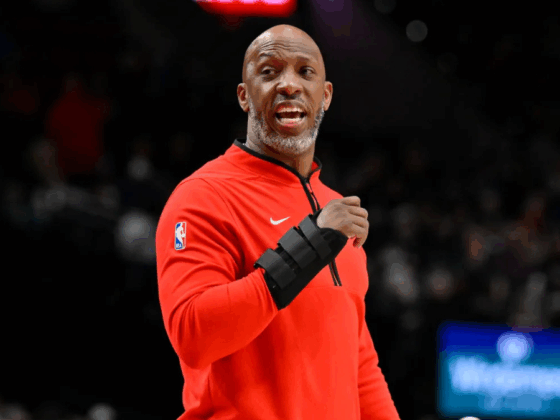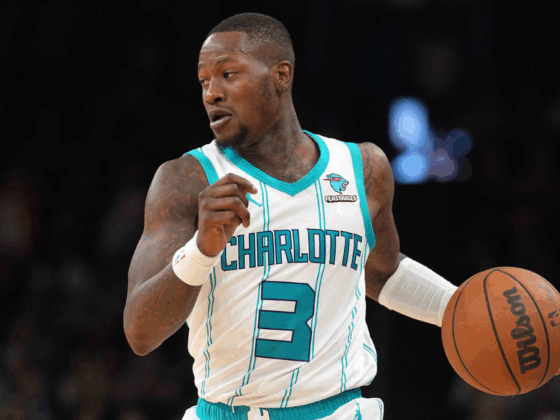
The dynamic between those who immediately spew their takes and those who require near-convictable evidence to do so is jarring following Summer League play. One side free falls to conclusions while the other attempts to throw them a parachute. The NBA’s construction inherently decides their position in this ongoing battle. Its 82-game seasons, seven-game series and interminable relevance indicates the necessity for a wealth of evidence.
This is why the 15 days of Summer League feel more like a blip than definitive proof. The most games a young player typically plays sits around just six or seven. This would make up eight percent of the regular season or ten times less evidence than a full NBA year. With such an insignificant amount of games played, most people would cringe at the sight of someone attempting to use that apparent blip as conclusive proof.
This is why the loudest faction of Summer League consumers scream from their internet soapboxes to never overreact to the play in these games. Despite their incessant bellowing, they are not wrong. Sample size is a a major issue and players evolve from year to year while they grow more comfortable in the NBA. Defining who these players will be is a venture into the inevitably incorrect but evaluating who these players are may not be all that foolish.
Evaluating what a player excels at and where he struggles becomes pretty clear in Summer League. Most of these characteristics then translate over into the following season. Looking back at the top-six picks that attended Summer League and their per-36 stats from the following season shows just how predictive the Vegas tourney can be.

The green indicates the counting stats and percentages that came within just one quantifier of their Summer League performances while the yellow is the stats and percentages that came within just two quantifiers.
So, this means, over the last three years, in regards to the most highly touted picks of the draft, the most basic counting stats in Vegas came within one of their regular-season averages 32.4 percent of the time and within two an astounding 43.4 percent of the time.
That is a relatively large percentage for such a small sample size and for something that many reprimand others for taking too much stock in. This is not to say that Summer League is a clear indicator of what a certain player will do in the regular season, but rather the tournament is a decent way to evaluate the talent that resides in it.
The talent that displayed their advantages and weaknesses in this year’s especially hot desert contest revealed a lot.
Deandre Ayton proved to have loud skills, such as being an absolutely immovable object in the paint. Most guards wanted to completely avoid going at him as he appeared to be the largest player in Vegas by a sizable margin. Because of this, he was able to easily get position on offensive rebounds, which seem to be his main form of offensive production at the next level, along with alley oops out of the pick and roll.
His weaknesses are just as loud as his strengths, however. He has no usable post game, can barely shoot from midrange and is absolutely not a 3-point threat. His speed also comes and goes as his size drags him down, appearing as though his biceps are stuffed with cement rather than muscle. As centers increasingly need to defend guards, he does not seem ready for such a task.
The center that appeared to be truly deserving of the No. 1 overall selection was Wendell Carter Jr. Contrary to Ayton’s periodic Andre the Giant-like sluggishness, Carter was clearly the most mobile big to be drafted as guards cowered when he defended them on the perimeter, much like they did against Ayton in paint. He also seemed to have a reliable hook shot, a decent 3-point stroke, and oh, yes, he was also a great rim protector, averaging 2.6 blocks per game during Summer League.
Another big that proved his athleticism was his greatest asset was Jaren Jackson Jr. He showed that he could guard any position, hit from anywhere — 14 of 28 from 3 in eight games is a gigantic number for a center — and that opposing players are always at risk of a rejection from Jackson.
His one primary flaw is attempting shots that he clearly cannot execute. Spinning hooks off the block, turnaround jumpers and hurried shots that showcase a lack of passing vision are all unappealing parts of his game. He may benefit from the strictness of regular-season play because it may result in these kinds of attempts being cut out of his game.
Kevin Knox is a player that is afflicted with a similar weakness, the main problem being with his 3-point shot. He attempted them frequently but it is clearly not an NBA-ready skill. His ability to create off the dribble and slice to the hoop was his most eye-popping asset. His combination of size and controlled ball handling make for a devastating pairing and there were many times where he looked several years more experienced than his counterparts.
The guards also demonstrated abilities that went beyond their modest draft position. Trae Young’s passing ability rivaled that of last year’s passing savant, Lonzo Ball. Not only because his actual passing was advanced but because defenders had to respect his shooting, therefore giving him more lanes to pass.
Trae Young TOOK OVER the last 5 minutes of the game tonight to give the Hawks the W #Hawks pic.twitter.com/1Ipj9RHAhg
— Justin Jett (@JustinJett_) July 12, 2018
His ability to finish at the rim is a concern as he gets swallowed whole by defenses after beating his man off the dribble, which will negatively affect his passing skills if he cannot better navigate these lanes.
At times, Shai Gilgeous-Alexander appeared to be the best guard in the draft. He easily gets space off the dribble, seems to glide towards the rim and is a tough defender. His outside shooting is still a question mark, however, and his passing after driving into the belly of the defense is still suspect.
Collin Sexton immediately elicited thoughts of John Wall with his exceptional speed, gamer-fierce mentality and relentlessness, but his flaws also mirror that of Wall’s and then some. He is a very poor shooter from the outside, his relentlessness sometimes causes him to take ill-advised shots at the rim and he is nowhere near the passer Wall is.
These players showed these attributes in a very small amount of games but did so in a very obvious way. These games should not be used as projections for the quality of their careers but instead, as a guideline for what these players can accomplish and will vaguely look like next season. And in the NBA, they will have ample opportunities to dictate what these guidelines end up looking like.








